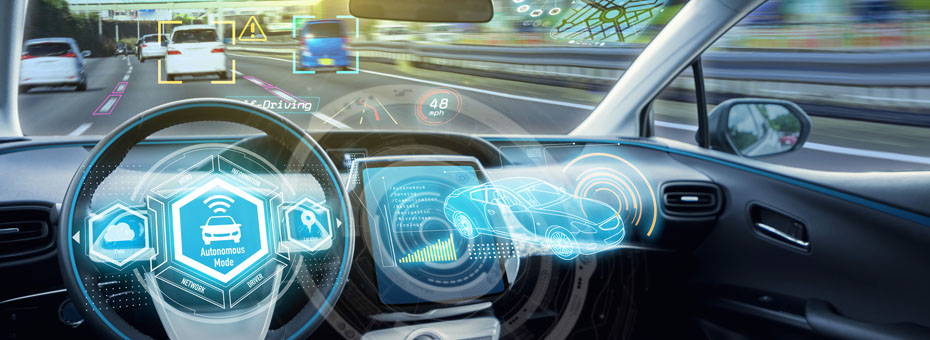New technologies are roiling the waters of industries as diverse as entertainment, hospitality, taxis, and aerospace. But perhaps nowhere are the waters murkier for what the future holds than the auto industry where autonomous vehicles, shared assets, new fuels, and other trends threaten to fundamentally change it.
What may be ahead for carmakers, product developers, and the lean management movement in a disrupted world is the subject of this Q&A with management author and expert Jim Womack, founding CEO of the nonprofit Lean Enterprise Institute (LEI). He talked with LEI Communications Director Chet Marchwinski at the Designing the Future Summit that showcases how companies are applying lean product and process development (LPPD). The text has been edited for length. Read the complete interview here.
Q: Will the new technologies disrupting the auto industry – autonomous vehicles, alternative fuels, hyper-connectivity — encourage car companies to be more than car companies by providing not just an automobile but essential services like insurance or delivering the next car we need when it’s needed?
Jim: Well, first I’m not trying to make the world safe for car companies. Maybe we don’t need car companies. Maybe somebody else steps forward. And that’s part of the disruption. We think the people who are likely to step forward are coming out of the new Silicon-Valley world rather than the old Detroit world. And that’s what’s so scary about this for the big car companies.
Their response is to invest in everything. Go out and buy an autonomy business, go out take a big stake in a sharing organization, and do experiments with alternatives to batteries. Why don’t we start with a customer and work backward to figure out what we need in the way of an industrial structure. And then finally there’s this business about asset sharing, which was supposed to be at a point where none of us would need a car. We would just take Uber and Lyft. Well, Uber and Lyft have yet to show any evidence they can make any money.
Q: In an e-letter, you noted that there’s the auto industry’s response to disruption, and then there’s Toyota’s response to disruption. Toyota is pursuing electric vehicles and hydrogen fuel cells, and self-driving vehicles but also human-driven vehicles with software so humans can’t make a serious mistake. They have a partnership with Uber, but they’re also experimenting with their own fleet of shared autonomous vehicles. Is Toyota engaging in deep study, or is it simply that they don’t know what to do, or is it an example of early set-based concurrent engineering?
Jim: Well, it’s interesting isn’t it? The key thing Toyota remembered to bring to the party was a whole lot of money, like three times what anybody else has got to play with. That’s company policy going all the way back to its bankruptcy of 1950. They said, “We’re out of cash. We will never run out of cash again.” Therefore, they go into this as a rather cautious company. They like to be a follower actually rather than a leader, technologically. The Prius is the big exception. So, Toyota believes in a portfolio of opportunities and alternatives to experiment with.
Q: You’ve asked product-development teams to rethink how they define customer value during the study phase, the first phase of lean product and process development when teams research the needs of intended customers. What’s the problem that you see?
Jim: In the world today, no one has ridden in an autonomous vehicle without a test engineer. So how do you know what people feel about a product when no one has ever actually used it? The point is that you have to do long-term investment on big systems without any evidence of what people actually think about this. So, there’s no way to do a cheap, quick test. So that’s one of the problems here.
The other is that these are technically very daunting, and they involve not just one or two things that haven’t been done before, they involve lots of things. And in the lean product and process development community, we believe in compatibility before completion — before you finalize the design, you make sure the components want to live together. You can’t have software for an autonomous vehicle that sort of works. That’s fine for a social-media app, and that’s where the lean startup movement began with the minimal viable product idea. They pointed out that people were trying to get perfect code before they ever showed it to a customer. Well, I don’t know about you, but I don’t want the beta version of an autonomous vehicle.
Oh, by the way, the same guys who want to bring you autonomy are the guys who brought you handheld electronics that create driver distraction, which is why the death rate is up. But that’s okay because they’re going to provide autonomy, which will take it right back down again. That’s pretty weird.
Q: What do you see as the current state of the lean management movement?
Jim: The way lean management ideas came to the U.S. and Europe was that people thought they were about factories, techniques, and methods – JIT, jidoka, andon, and so forth. It’s a toolkit. And it took a long time for people to realize that lean enterprises have interlocking systems, including a product and process development module, a supplier management module, a customer support module, and, sure enough, a production module all wrapped up in a general management concept.
As people tried to apply the tools, typically with consultants in short-term interventions, they discovered that nothing sticks; they were doing kaizen on top of chaos. It turns out that the specific gravity of kaizen is greater than the specific gravity of chaos. So glub, glub, glub, glub, the kaizen disappears.
We now realize that you need the whole system and in particular, you need a management system that can identify problems very quickly and countermeasure them so that you sustain performance. I think we’re making some progress, but it’s never as fast as it should be or as fast as we want it to be.







